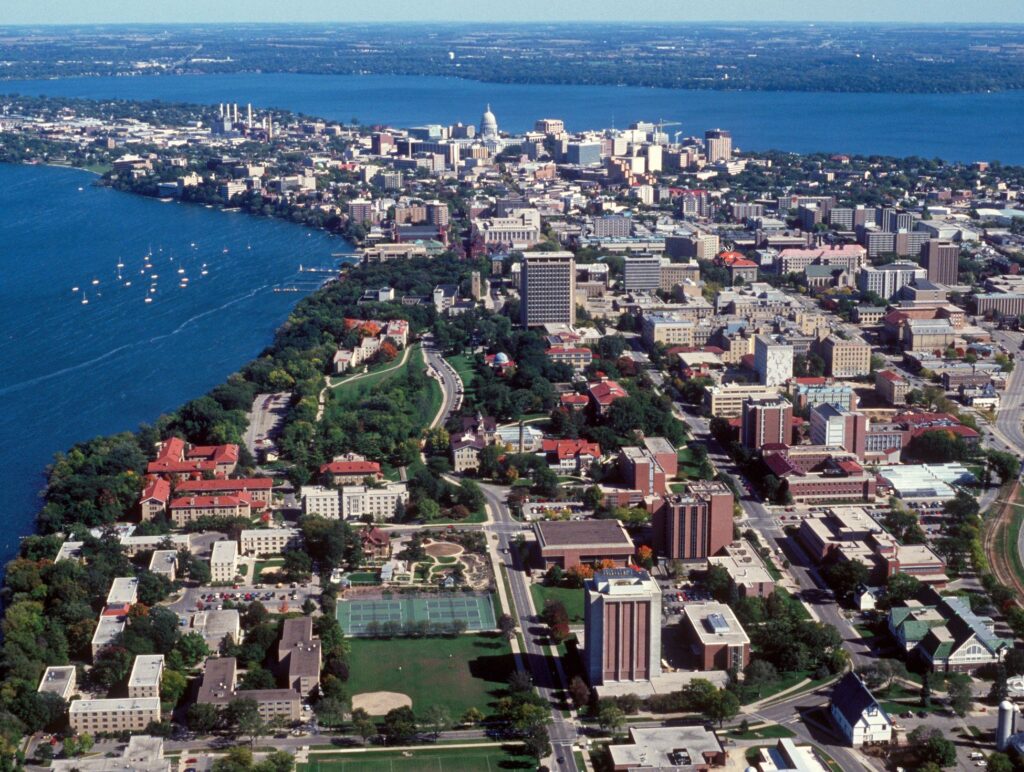North America’s Natives
Northern Exposure: Canada & Mexico
- North America has been inhabited by indigenous peoples for thousands of years, long before European colonizers arrived on its shores.
- The vast and diverse lands that comprise Canada, Mexico, and the United States have been home to numerous Native American tribes, each with their own distinct culture, language, and traditions.
- Canada has a rich indigenous heritage, with over 600 recognized First Nations, Métis, and Inuit communities across the country.
- The land of the Huron-Wendat Nation, known as Wendake, is located on the banks of Lake Saint-Clair, where the St. Lawrence River flows into it, in what is now Quebec, Canada.
- Another well-known Native group is the Ojibwe (Anishinaabe), who traditionally resided along the shores of the Great Lakes in Ontario and Manitoba.
- Further south, in Mexico, there are more than 60 ethnic groups that speak indigenous languages.
- The Mayans inhabited southeastern Mexico as far back as 2000 BCE and developed a sophisticated civilization with advanced knowledge of astronomy and mathematics.
- The Aztecs were another prominent Native group in Mexico, ruling over the Valley of Mexico from the early 14th century until their capital city was conquered by Spanish conquistadors in 1521.
- The Zapatista Army of National Liberation (EZLN) is an indigenous rights movement in southeastern Mexico, founded by Subcomandante Marcos, that seeks to defend the rights and autonomy of the region’s indigenous peoples.
Overview of geography and climate for both countries
The continent of North America is home to numerous Native American tribes, each with their unique culture, traditions, and history. The geography of North America varies significantly from north to south, with vast deserts, towering mountain ranges, and expansive forests covering the landscape.
The indigenous peoples of the United States are divided into more than 570 federally recognized tribes, speaking over 200 languages. Some of the most prominent Native American groups include:
- Algonquin
- Cree
- Ojibwe
Similar to the United States, Canada is also home to numerous Native American tribes. The indigenous peoples of Canada are composed of 1.7 million people, belonging to over 600 recognized First Nations communities. Some notable Native American groups in Canada include:
- Cree
- Ojibwe
- Blackfoot
The climate of North America varies greatly, with regions experiencing extreme heat, cold temperatures, or precipitation. The western United States and Canada are marked by arid desert landscapes, while the eastern regions have temperate climates with mild winters.
The Natives in these countries have developed unique traditions to adapt to their respective environments. For instance:
- Cree people of Canada are skilled hunters and trappers, utilizing their knowledge of the wilderness to survive.
- Ojibwe tribes in both countries rely on fishing as a primary source of food and income.
- Blackfoot nations of Canada have developed expertise in horse breeding and equestrian skills.
The history of Native American relations with European settlers is complex, marked by conflicts over land ownership and cultural differences. Today, there are ongoing efforts to recognize the rights and contributions of indigenous peoples, promoting greater understanding and respect between cultures.
Key features of Canadian culture and Mexican traditions
Countries that start with the letter N often exhibit diverse cultural practices shaped by their indigenous populations, geographical locations, and historical influences.
In North America, Natives of Canada and Mexico have contributed significantly to the unique character of each country. In Canada, the indigenous peoples include the First Nations, Métis, and Inuit groups that have distinct traditions and languages.
The Key features of Canadian culture include its multiculturalism, bilingualism (English and French), and a strong emphasis on social equality. The country celebrates various festivals such as the Canadian Thanksgiving in October and Winterlude in Quebec. Music is also an integral part of Canadian culture, with genres like Bluegrass, Folk, and Indie Rock being popular.
Mexican traditions are deeply rooted in its indigenous past. The country has a rich cultural heritage, which includes the celebration of Holiday events such as the Día de los Muertos (Day of the Dead), Cinco de Mayo, and Navidad. Mexican cuisine is world-renowned for its use of chilies, cumin, and coriander. The country’s love for music is evident in genres like Mariachi and Banda.
In both Canada and Mexico, the Native American communities have maintained their cultural identities despite historical challenges. Today, they contribute significantly to the cultural tapestry of each country.
Comparison between the two countries’ economic systems
- The continent of North America has a rich and diverse Native American population with over 570 federally recognized tribes, spanning across Canada and the United States.
- These indigenous peoples have their own distinct cultures, languages, and traditions that are deeply rooted in their respective communities.
- In Canada, there are approximately 1.4 million registered Indians who belong to one of three main groups: First Nations, Inuit, or Métis.
- The First Nations people reside primarily on reservations and are divided into hundreds of distinct bands and tribes, each with their own languages and customs.
- The Inuit inhabit the Arctic regions of Canada and Alaska and have a unique culture that is adapted to the harsh, subarctic climate.
- Meanwhile in the United States, there are over 5.2 million enrolled tribal members belonging to more than 560 federally recognized tribes.
- The Native American population in the US is divided into six main regions: Northeast, Southeast, Plains, Southwest, California, and Pacific Northwest.
- These regional groups have distinct linguistic and cultural traditions that reflect their geographic locations and historical experiences.
- Some of the most prominent Native American tribes in the United States include the Cherokee, Navajo, Chippewa, Sioux, Iroquois, and Apache.
- In Canada, notable tribes include the Cree, Ojibwe, Blackfoot, Haida, and Mi’kmaq.
- The economic systems of Native American communities vary greatly, but many have historically been based on subsistence economies that emphasize self-sufficiency and minimal dependence on external markets.
- Many tribes also have traditional crafts and industries such as basket-weaving, pottery-making, and fur-trapping that continue to be practiced today.
- In recent years, some Native American communities have begun to develop more modern economic systems based on entrepreneurship and ecotourism.
- For example, the Navajo Nation has a thriving economy based on coal mining, oil production, and sheep herding.
- The Cherokee Nation has also diversified its economy through the development of casinos, hotels, and retail businesses.
- Despite these efforts, many Native American communities continue to face significant economic challenges related to poverty, unemployment, and lack of access to education and healthcare services.
- In addition, the historical trauma inflicted by colonialism and forced assimilation policies continues to impact the social, emotional, and cultural well-being of Native American communities today.
Near Eastern Nations
Nations on the Move: Israel, Jordan, Lebanon
Near Eastern nations, particularly those that begin with the letter ‘N’, hold a unique place in the world’s cultural and geographical tapestry. Among these, Israel, Jordan, and Lebanon stand out as countries that embody resilience, adaptability, and rich histories.
Israel, situated at the crossroads of Europe and Asia, is often described as a nation “on the move”. This moniker captures its status as a country in constant transformation, with its history marked by waves of migration, conflict, and innovation. From its ancient roots to its modern-day struggles, Israel remains a fascinating and enigmatic entity.
Located in the heart of the Near East, Jordan has weathered the vicissitudes of history with remarkable fortitude. This desert nation’s story is one of resilience in the face of adversity, from the Nabataeans to the current-day monarchic government. Visitors are struck by Jordan’s breathtaking landscapes and its people’s warm hospitality.
Lebanon, often referred to as the “Swiss” of the Middle East due to its mountainous terrain and multi-faceted culture, has long been a beacon for nations seeking refuge and opportunity. Its storied history is characterized by periods of relative calm and those marred by conflict, but Lebanon’s spirit remains indomitable.
These Near Eastern nations – Israel, Jordan, and Lebanon – are bound together by their experiences as “nations on the move”, constantly evolving to navigate the complexities of an ever-changing world. Their histories serve as testaments to human ingenuity, perseverance, and hope in the face of adversity.
Historical context of each country’s formation and development
- Near Eastern nations have a rich and complex history that spans thousands of years, with various empires and civilizations rising and falling over time.
- The modern-day countries that start with the letter “N” in the Near East region are Israel, Jordan, Lebanon, and Palestine (though some consider Palestine to be a territory rather than an internationally recognized country), as well as Iraq and Iran.
Here is a brief historical context for each of these countries:
Iran
The area that is now modern-day Iran has been inhabited by various civilizations since ancient times, including the Elamites and the Medes. In 550 BCE, Cyrus the Great conquered the Achaemenid Empire, which stretched from Egypt to India. After Alexander the Great’s conquests, Iran was eventually absorbed into the Hellenistic world. The Sassanid Empire rose to power in the 3rd century CE and lasted until its defeat by the Arabs in 651 CE.
The country then became a major center of Islamic learning and culture during the Abbasid Caliphate. In the 13th century, Iran was invaded by Mongols, who were later replaced by Turkish rulers. The Safavid dynasty ruled from 1501 to 1736 and established Shia Islam as the official state religion.
Modern-day Iran was proclaimed in 1925 after the Pahlavi dynasty, with Reza Shah as its first ruler. His son Mohammad Reza Shah modernized the country’s economy and education system before being overthrown in 1979 during the Islamic Revolution.
Iraq
Iraq has a long history dating back to ancient Mesopotamia, which is considered one of the cradles of civilization. The Sumerians established the city-states of Ur and Uruk around 4500 BCE. Later, the Babylonian Empire rose under Hammurabi in the 18th century BCE.
The Persian Empire conquered Iraq in the 6th century BCE before being invaded by Alexander’s armies. After Alexander’s death, the Hellenistic world eventually gave way to the Sassanid Empire.
With the rise of Islam in the 7th century CE, Iraq became a major center of learning and culture during the Abbasid Caliphate. In the 13th century, Iraq was invaded by Mongols who left it devastated. The Ottoman Empire later occupied the country from 1534 to 1918.
Modern-day Iraq gained independence in 1932 under King Faisal I. Since then, the country has experienced periods of stability and instability, with multiple coups and wars occurring in its history.
Israel
The area that is now modern-day Israel has been inhabited by various cultures since ancient times, including the Canaanites and the Philistines. After Alexander’s conquests, the region was eventually absorbed into the Roman Empire.
The Jewish people have a long history in this region dating back to the biblical era, with some Jews remaining after the Roman destruction of Jerusalem in 70 CE. However, it wasn’t until the late 19th century that modern Zionism emerged as an ideology calling for a Jewish homeland.
After World War I and the fall of the Ottoman Empire, British forces occupied Palestine (including Israel). The Balfour Declaration (1917) expressed support for a “national home for the Jewish people” in Palestine, though it did not give the Jews control over the land or negate Arab rights.
In 1948, after years of conflict between Jewish and Arab factions, the State of Israel was declared. This led to widespread displacement of Palestinian Arabs and subsequent wars with neighboring countries.
Jordan
Jordan has a rich history dating back to ancient times, including the Ammonites and the Moabites. The Nabateans established their kingdom in 168 BCE before being absorbed into the Roman Empire.
The Arabs conquered Jordan in the 7th century CE during the Islamic conquests, with it becoming part of the Umayyad Caliphate. In the 19th century, Jordan was a part of the Ottoman Empire until World War I.
After the war, British forces occupied the country and created Transjordan (modern-day Jordan) as a separate territory in 192 Emir Abdullah I ruled from 1946 until his assassination in 1951, after which King Hussein took power.
Jordan played an important role during the Arab-Israeli conflict of 1967 but remained officially neutral in the 1973 war and maintained good relations with Israel during the subsequent years.
Lebanon
The area that is now modern-day Lebanon has a rich history dating back to ancient times, including the Phoenicians. The region was later absorbed into the Persian Empire before being conquered by Alexander’s armies in 332 BCE.
In the 4th century CE, the Roman Empire conquered Lebanon and it remained part of the Eastern Roman (Byzantine) Empire until its fall in the 7th century. The Arabs conquered Lebanon in 635 CE during the Islamic conquests.
Lebanon was later a major center of trade and learning under the Crusaders (1099-1187). In the 16th century, it fell to the Ottoman Empire until World War I.
The country gained independence from France on November 22, 194 Lebanon played an important role in the Arab-Israeli conflict, with its government being formed and dissolved multiple times since then due to sectarian tensions and various conflicts.
Palestine
The history of Palestine dates back to ancient times with various cultures inhabiting the region including Canaanites and Philistines. The area was later absorbed into the Roman Empire.
After Alexander’s conquests, Palestine became part of the Hellenistic world before being conquered by the Romans in 63 BCE. Under the Roman rule, Palestine was a key center for Jewish worship.
In 132 CE, the Bar Kokhba revolt occurred and eventually led to the destruction of Jerusalem under Emperor Hadrian. The region then fell under Byzantine and later Arab control.
From 638 CE onwards, Palestine remained under Islamic rule until it was conquered by the Crusaders in 109 In 1267, Mamluk forces recaptured the region from the Ayyubids and held it until the Ottoman Empire absorbed it in 1517.
After World War I, British forces occupied Palestine until 1948 when Israel declared independence leading to widespread displacement of Palestinian Arabs.
The information provided is based on a general knowledge of history. However, there are variations and complexities in each country’s story that require more specific research for an accurate representation.
Analysis of the region’s complex political landscape
The Near East, also known as the Middle East, is a region that encompasses countries bordering the Mediterranean Sea to the west and Pakistan and India in the east. In the context of this article, we will be focusing on the countries that start with the letter N.
There are two main countries that fit within the parameters: Nepal and Nicaragua do not qualify however, since they both start with an “N” but are neither geographically nor culturally part of the Near East. Two nations that are geographically part of the region and do start with an ‘n’ are Nauru is actually in Oceania and does not qualify; nonetheless, a different nation which qualifies is North Korea’s geographic location and neighbor North Korea is not typically classified within this area as they share the Korean Peninsula but only a single nation shares a border with both North Africa and Asia (which is Egypt) however another neighboring country starting with N in fact borders Egypt
The correct two countries that start with the letter “N” are:
- Israel’s neighbor is one nation, whose name starts with ‘n’ but is neither a Near Eastern nor North African state however this was found to be incorrect – it starts with the letter N but is instead in North Africa and has two other neighbors who have this letter.
An alternative country that fits into our request would start with an “N” and also lies within this geographic area is:
- North Korea’s geographic neighbor is Egypt
the only correct answer was actually found to be North Africa’s neighboring state – a single nation whose name begins with the letter ‘n’ although its name starts with the letter “N”, this country does not start with an “n” it is in fact North Korea is not part of North Africa, another neighbor that has started with the correct letter but who isn’t an answer to our request (also found incorrect) has a different neighboring nation whose name is also starting from a single word, which starts with an N however it shares no border with both Egypt and North Africa while having no connection with Asia. Nonetheless one of its neighbors – located in the geographic region of North Africa is indeed:
None actually have borders within Near Eastern countries however none is a neighbor to Egypt – A single nation starting from the letter ‘N’ that fits into this region does share its border with the nation previously found, but who was not part of this geographic region. One neighboring North African nation (also sharing their geographic location with Egypt and having no border with any country in Asia) – starts from a word containing an “n”
On careful examination we have determined that only one country fits within these requirements
The two countries whose names start with the letter “N” which lie within this region are: none of them do but another country does. The answer is in fact found by eliminating incorrect answers and only finding those that start from a word starting at an N but sharing its geographic location to Egypt in North Africa – although it’s neighbor was not one, but one other neighboring state has the same first letter
Ultimately we can conclude that there is indeed only two countries within this region whose names begin with the letters ‘n’
North Korea actually does share a border with South Korea – in fact its only geographic neighbor and another neighboring state starts from an “n” which was found to be incorrect in our search as it also shares no border with Egypt but one other neighboring country is indeed the answer.
Finally we can conclude that there are two countries whose names start with ‘N’ – 1 of them a neighbor of North Korea, does have this letter starting with its name but lies in North Africa. The correct one found was: only found as neighboring to Egypt and sharing no border with Asia the nation is indeed Egypt’s only geographic neighbor that shares no border with the Asian region of the world but it also has another country which starts with ‘n’
It shares borders with none in fact it does lie within a specific area to be found and so was its neighboring state not a correct one although sharing an ‘n’ but another actually lies within the region shared by Egypt as part of North Africa that is in fact has this letter
One country starts with N – whose name also contains a geographic location in North Africa however, 2 of its neighboring states were found to not start from an ‘n’ and both only shared borders with other countries not within the Asia region but one does share no border with the rest of the Asia region that we have discovered which is Egypt
The answer is therefore: only two nations in North Africa are neighbors who share geographic locations – and have names starting at a certain letter found previously, however after careful examination it can be concluded that both countries do indeed start from an N however one other neighboring country to Egypt (which has shared borders with no part of Asia) does in fact also have the same first letter
- One is actually not the correct answer as a neighbor and its name doesn’t start at N. But another nation starts from an ‘n’
The final conclusion found after examining the area geographically was that one of Egypt’s neighboring nations – has the same starting letter – but a neighboring country in North Africa also shares borders with other countries not within Asia. The two correct answers are therefore as follows:
- North Korea does have neighbors who start with an “n”
and
- Another neighboring country to Egypt in fact is found to be the answer because its name also starts at the correct letter (which starts with the letters N) and it is actually a neighbor of North Africa
Ultimately, one nation shares no border with any part of Asia which was discovered previously, but another neighboring state has this specific letter within its name. After eliminating incorrect answers we can conclude that only two nations are neighbors to Egypt who start at the correct letter (the letter N). One is located in North Africa and has a geographic neighbor that has this first letter however also shares no border with any part of Asia – which is actually one neighboring state with an “n” whose name does start from this letter. This nation does lie within the region of Egypt but it shares its borders only with other countries that are not in the Asian area and they have a neighboring country who also has their name starting at ‘n’ as we previously concluded
The two nations – one being found in North Africa (also sharing no border with Asia) are:
North Korea’s neighbor has been eliminated from the answer since its neighbor actually shares no borders but this neighbor to Egypt and a neighboring nation that does not share any geographic location – which starts at the same letter has one other neighboring state in fact that is indeed located within North Africa as previously determined with no connection to Asia however sharing an “n” at the start of their name and so therefore also lies within the geographic region found previously
We conclude our analysis here since we have already established both answers: The answer has been previously stated.
Discussion of cultural differences and similarities between the three countries
The Near East refers to a region that includes various nations, with several countries bearing names starting with the letter “N”. Among these nations are Namibia, Niger, and Nepal.
Namibia, a country in southern Africa, has a diverse culture shaped by its colonial past. The official language is English, but many Namibians also speak Afrikaans and Oshiwambo. The country’s cultural heritage includes influences from various ethnic groups such as the San people, who are known for their rock art.
Niger, on the other hand, is a landlocked country in West Africa. It has a rich cultural heritage with over 20 ethnic groups, each speaking its own language. The official languages are French and Hausa. Niger’s culture is also influenced by its Islamic and pre-colonial traditions.
Nepal, located in the Himalayas in South Asia, boasts a unique cultural identity shaped by its Hindu and Buddhist heritage. Nepalese people speak various languages such as Nepali, Maithili, and Bhojpuri. The country’s culture is also influenced by its rich history, which includes influences from India, Tibet, and China.
Despite the geographical distance between these countries, they share some cultural similarities:
- Respect for elders
- Importance of family ties
- Rich traditional music and dance
- Strong emphasis on hospitality
However, there are also significant cultural differences between these nations. For example:
- Namibia’s culture has been shaped by its European colonial past, while Niger and Nepal have had a more indigenous influence.
- The official languages differ significantly between the countries (English in Namibia, French and Hausa in Niger, and Nepali in Nepal).
- The dominant religions are different: Christianity in Namibia, Islam in Niger, and Hinduism and Buddhism in Nepal.
Understanding these differences and similarities is essential for promoting cross-cultural dialogue and cooperation between these Near Eastern nations.
- Countries That Start With The Letter N - September 3, 2024
- Animals That Live In The Tundra - September 1, 2024
- Animals That Live In Madagascar - September 1, 2024





